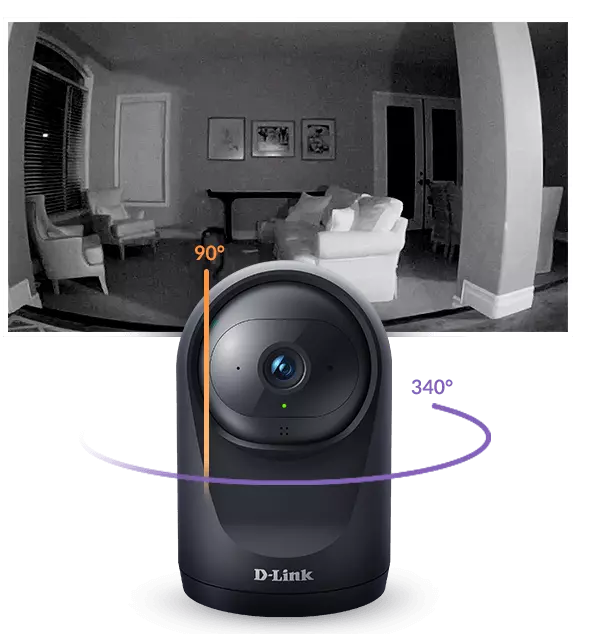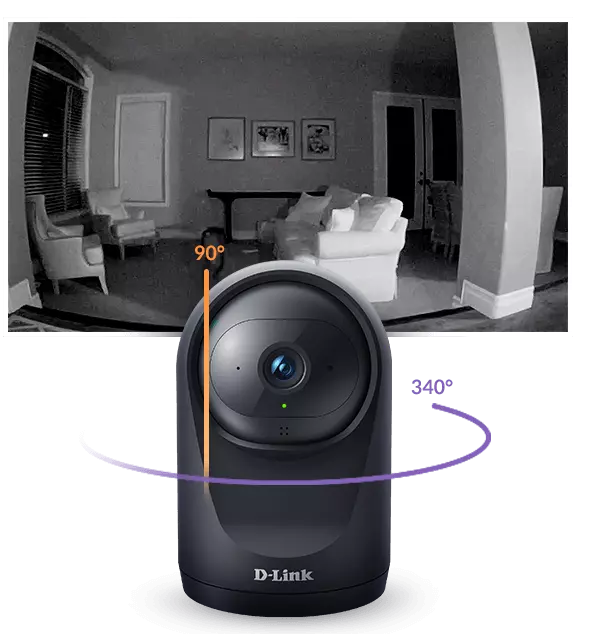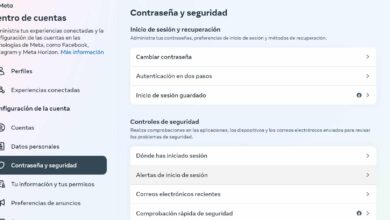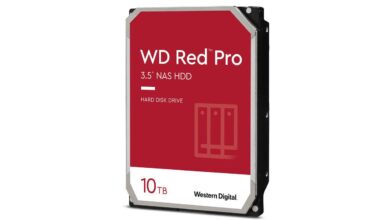
Home IP cameras are one of the cheapest and easiest to use security elements for our home. Thanks to these cameras, we will be able to monitor our home when we are not in it, including the possibility of monitoring our pets and even interacting with them remotely if the camera has two-way audio. However, if we want to see the camera live from outside the home, we must take into account the speed of our Internet connection, both at home and wherever we are with our smartphone. Today at RedesZone we are going to explain what Internet speed you need for an IP camera to be seen correctly.
Resolution of IP cameras
Currently, most domestic IP cameras that we can buy anywhere have HD 720p resolution or Full HD 1080p resolution. Only the highest-end models aimed at the home environment have a 2K resolution, of course, right now there are no home IP cameras that are affordable with 4K resolution, although at RedesZone we have tested professional IP cameras with this high resolution.
Depending on the resolution of the camera, the frame rate (FPS) and the compression of the image, we will have one bitrate or another when viewing the camera. The bitrate or bit rate is the most important thing to know how much Internet speed we need to view the camera correctly and without problems, the higher the resolution we have, the higher the bitrate will be, so we will need a faster Internet connection, the same happens if we have a FPS of 30FPS instead of 15 FPS, we need a higher available bandwidth in the first case. With respect to compression codec used, most cameras use the usual H.264 codec, however, the latest models of IP cameras support H.265, which gives us the same resolution and image quality but with a lower bitrate.
Therefore, depending on the resolution, the frames per second, the type of compression and the compression of the video, we will have a higher or lower bitrate. Next, we leave you an approximate bitrate used by domestic IP cameras:
- HD 720P: about 0.5Mbps.
- Full HD 1080p at 30 FPS: between 0.7Mbps and 1.5Mbps depending on the camera.
- 2K at 30 FPS: from 3Mbps to 5Mbps.
At RedesZone we have checked the Full HD 1080p bitrate of two cameras, which also allow configuration in 720p mode. The DCS-8000LHv2 model has an HD bitrate of approximately 0.4Mbps, although it obviously varies depending on what you’re focusing on at any given moment, and the DCS-8302LH model has a bitrate of 0.7Mbps in this same scenario. In Full HD 1080p mode with the DCS-8000LHv2 camera we have achieved a bitrate of approximately 0.8Mbps, and with the DCS-8302LH model we have achieved about 1.1Mbps-1.2Mbps.
In the previous image, you can see a screenshot of the bitrate or bit rate of this last camera that we have mentioned in Full HD mode with 30 FPS.
When we had the opportunity to test the D-Link DCS-4718E professional camera, we verified that this model in Ultra HD (4K) resolution at 20 FPS has a bitrate of approximately 15Mbps. So home IP cameras have a lot less bitrate in comparison.
internet speed i need
The bitrate used by IP cameras is really low, with having an Internet connection of about 2Mbps in our house is already enough to be able to visualize the cameras without many problems. In the vast majority of cases, in the home Internet connection we will have FTTH with speeds greater than 100Mbps. In the case of viewing the cameras from the smartphone or tablet away from home, we must take into account the 3G/4G or 5G connectivity that we have. In these cases, it is where we must verify that we receive good coverage and we can have a stable data speed so that there is no type of cut or interruption.
Another very important aspect that we must also assess is the latency of the connection, both in our home and wherever we are connecting. In domestic IP cameras, all the traffic goes through the manufacturer’s Cloud, that is, the IP camera traffic will go through the manufacturer’s servers and we will connect to these servers with the smartphone, to later view the camera with reverse connections. Taking this into account, it is very important to have as little latency as possible, otherwise, we could see a lot of delay in the camera and even a cut in the transmission.
Other aspects that we must take into account is that the cameras will allow us to adapt the resolution to our Internet connection. If it detects that the connection is unstable and has low speed, it will automatically be set to 720p resolution and even 480p or 360p, drastically reducing both the resolution and the bitrate that we need. All camera models also have the possibility to lower the number of FPS in case it is necessary for the image to be seen correctly, therefore the image is adaptive.






